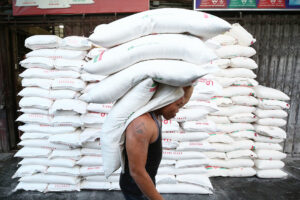LOCAL ECONOMISTS kept their growth forecasts for the Philippines unchanged for now, even as a widening corruption scandal weighs on investor sentiment.
“We’re keeping an eye on governance issues like corruption because they can affect investor confidence and, ultimately, growth,” Ruben Carlo O. Asuncion, chief economist at Union Bank of the Philippines said in a Viber message on Oct. 2.
“But for now, our baseline view remains unchanged and we will continue to monitor macro data as they become available,” he said.
Mr. Asuncion said the bank kept its 5.5% gross domestic product (GDP) growth outlook for this year and 5.7% for 2026, supported by stronger domestic demand and recovery in infrastructure spending.
The government is targeting 5.5-6.5% GDP growth this year, and 6-7% in 2026.
The Independent Commission for Infrastructure, Congress and Ombudsman are conducting investigations into allegations of corruption in government infrastructure projects, particularly flood control projects under the Department of Public Works and Highways.
Emilio S. Neri Jr., lead economist at Bank of the Philippine Islands, said the 2025 growth projection remains at 5.6%, citing minimal declines in government spending through August.
“We will wait for clearer evidence of any sizeable declines among our leading growth indicators before we revise,” Mr. Neri told BusinessWorld in a Viber message.
Pantheon Macroeconomics Chief Emerging Asia Economist Miguel Chanco said he is not expecting any growth forecast revisions anytime soon, as their 5.3% forecast for 2025 and 5.4% for 2026, are already on the “downbeat side.”
“The risks, even to our already-soft projections, are arguably now more skewed to the downside, particularly for the second half of this year and early next,” he said.
Rizal Commercial Banking Corp. Chief Economist Michael L. Ricafort said it is still possible to achieve the government’s growth targets.
Mr. Ricafort said the government probe is expected to “realistically” dampen growth in state infrastructure spending and weigh on GDP, though the impact may be offset by the reallocation of certain flood control projects to other departments.
Meanwhile, Reyes Tacandong & Co. Senior Adviser Jonathan L. Ravelas has trimmed his growth forecast for this year from 6% to 5.7%, but not due solely to the flood control mess.
The downward revision takes into consideration the impact of US tariffs, upside risks to inflation and political noise, he said.
Institutions like the Asian Development Bank (ADB) and the International Monetary Fund (IMF) have downgraded their Philippine growth forecasts, citing elevated global uncertainties.
In its latest Asian Development Outlook, the ADB trimmed its Philippine growth forecast to 5.7% in 2026 from 5.8% in its July projection. It also kept its growth forecast unchanged at 5.6% this year.
ADB Country Director for the Philippines Andrew Jeffries earlier said corruption remains a “heightened risk” but will further monitor.
For this year, the IMF cut its 2025 forecast to 5.4%, slightly lower than its 5.5% projection in July. It also slashed its 2026 outlook to 5.7% from 5.9% previously, amid global uncertainties and geopolitical tensions.
MORE SUPPORT FOR MONITORING AGENCIESMeanwhile, Economy Secretary Arsenio M. Balisacan earlier called for increased support for research and development monitoring and evaluation, as well as for regional development councils (RDCs) tasked with overseeing infrastructure initiatives, including flood mitigation projects.
“I find also quite missing, the lack of appreciation of what monitoring and evaluation can do,” Mr. Balisacan told a Senate Finance Committee hearing on Oct. 3.
“We don’t provide enough support to good studies doing impact assessment, monitoring assessment of completed and ongoing projects, especially for completed projects so that we don’t keep repeating mistakes over and over again.”
Mr. Balisacan also called for more resources for RDCs, who are on the ground monitoring projects.
“We have that committee, and they’re supposed to know and able to monitor these various infrastructure projects, including flood control projects. But they don’t have resources to be able to do that function, especially as a difficult region (such as) Mimaropa (Mindoro, Marinduque, Romblon, and Palawan,” he said. — Aubrey Rose A. Inosante






